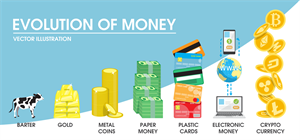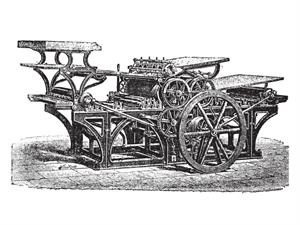PDF chapter test TRY NOW
The History of Paper Money:
Over the years, the coins made of metals were widespread across the world and the complete usage of metals like Gold and Silver over the years increased the cost of mining those metals which slowly became scarce.
Rulers and Governments across the world began mulling various alternate options for coin money. Later low value and cost-effective metals were used to make coins with the same face value and lesser intrinsic value.

The Journey of Money
The money took the form of paper under the reign of the Mongolian ruler “Kublai Khan” who ordered the conversion of the value printed in coins to be shifted to paper.
The Chinese connection:

Old Printing Press of China
The Chinese of the 11^{th} century were a pioneer in establishing the Printing Press which allowed them to create and print new paper currency in China.
Sichuan: This province of China was the first place where the paper money was printed and circulated among the people.
Marco-Polo, a Venetian traveller and explorer, visited some parts of Asia and the Silk Road (trade route created by China) in the 13^{th} Century. He also went on to script an account regarding his travel through China and the prevalence of paper money in its society.
Paper Money in Europe:
The European countries were still stuck with the usage of coin as a medium of exchange till the 16th Century. Only after the advent of Banking institutions across the continent did Paper Money found its place.
Canada: The First Instance of using Paper Money in Europe was found in Canada in 1685, where colonial governments of Europe traded with their colonies of North America.
The Earliest currencies of Europe were found in the bank of Stockholm, which introduced the “Credit Notes” in 1661. The Notes contained watermarks, the date of issue, the bank seal, and the banker's signature.
Later in 1764, the British enacted the Currency Act, which helped them control the flow of paper money. It abolished the local banknotes and introduced new pound-based money..
India and Paper Currency:
Paper money made its advent in India in 1720, which the Bank of Bombay issued in the form of Interest Notes. Banks were established in many parts of India, like Kanpur and Bihar.
The Paper Currency Act of 1861 handed Monopoly to the British empire to print and circulate paper currencies in colonies like India. The notes featured the image of Queen Victoria.
